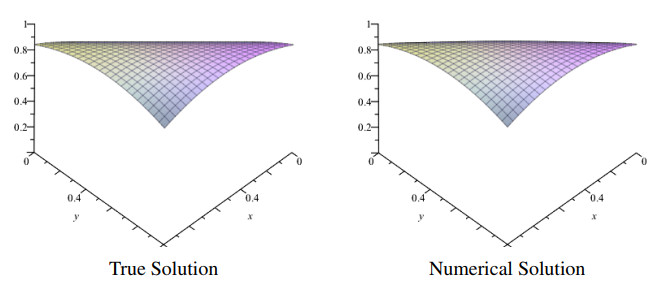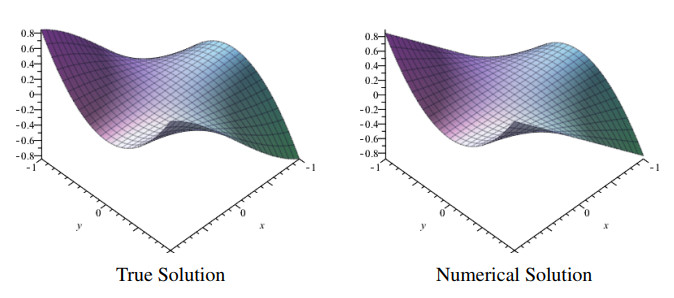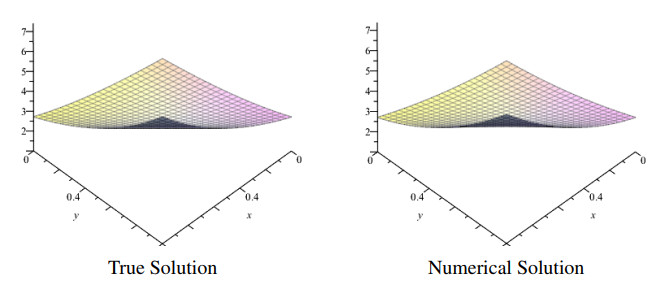1. Background
Work done in the late 1980s by Boyse and Broxmeyer revealed that blood left over in the placenta (termed cord blood or CB) after the birth of a child contained a large number of hematopoietic stem cells (HSC), presumably as a remnant of hematopoietic expansion during the last stages of gestation [1]. Further work done by these and other investigators postulated that cord blood could be substituted for bone marrow when performing stem cell transplants to treat malignant and genetic blood disorders [2]. These postulations were confirmed by early human transplants performed by Gluckman [3], Kurtzberg [4] and Wagner [5]. The early clinical successes of cord blood transplants led to the establishment of cord blood banks in the USA and worldwide as both private and public entities became involved in this novel means of clinical intervention. Cord blood was initially and continues to be valued for the past 20 years for its high concentration of HSC. More recent work has demonstrated the presence of endothelial cell precursors in the blood as well as MSC in the cord tissue that could be isolated and used clinically, both in a traditional sense in terms of hematopoietic transplantation as well as in more recent applications such as regenerative medicine and tissue engineering [6]. Worldwide, it is estimated that more than 600,000 CB units have now been publicly banked while several million more cord blood units have been placed into private CB banks and repositories. These efforts have resulted in more than 35,000 CB transplants being performed since the first clinical utilization of CB in 1988 [3,7], along with thousands more clinical applications in regenerative medicine [8]. Traditionally these CB efforts have been directed at pediatric patients due to concerns about smaller total numbers of nucleated cells (TNC) as compared to bone marrow harvests, despite more than adequate numbers of HSC being present. However, as discussed below, recent efforts using double unit transplants and the use of in vitro expanded CB HSC has begun to make this resource available to larger pediatric patients (e.g., older teens) as well as selected adult patients [9,10]. Such developments have been instrumental in moving CB stem cells into the regenerative medicine arena as an additional benefit to its traditional use in treating malignant and genetic hematopoietic disorders.
2. Clinical Uses: Past, Present and Future
Over the past 25 years millions of CB samples have been banked in various public and private repositories, and CB has been validated as a source of HSC for over 80 clinical applications. However, the percentage of banked CB samples that has been and are utilized clinically has always remained low, with a turnover rate of no more than 2–5% of inventory, based on published estimates of 600,000 cord blood specimens publically banked and 35,000 published cord blood transplants since 1988. Utilization rates for privately banked CB samples are probably even lower. Part of the reason for this low rate of sample utilization is the difficulty of trying to HLA match any two unrelated individuals for transplant [11], and the fact that ethnic minorities are under-represented in the public CB banks (see www.nmdp.org; at the 2016 AABB conference it was stated by NMDP that 25% of white patients and 80% of ethnic minority patients cannot locate an HLA-A, B, C, DR1 identical donor) and thus cannot be matched for and treated with CB. HOWEVER, the major reason for the low use rate is due to the fact that there simply are not that many typical stem cell transplants needed annually due to a relatively low incidence of blood cancers and genetic disorders as well as better chemotherapeutic and other interventions (e.g., CAR-T). In fact, for the United States alone it is estimated that only 2,000 pediatric patients and possibly 30,000 adult patients annually need a stem cell transplant out of a US population of more than 300 million (a 0.01% incidence; see www.nmdp.org). With that data in mind, more than a decade ago we and others sought out additional uses for the multitudes of stem cell units incubating in frozen storage. The announcement by the University of Wisconsin [12] of the discovery of embryonic stem (ES) cells and the christening of a new field of endeavor called regenerative medicine, led to the investigation of the potential use of CB stem cells in such applications. Discoveries by transplant physicians of CB HSC in neural tissue after stem cell transplants for cancer, as well as CB HSC occasionally giving rise to neural-derived cells after CB transplant further strengthened the hypothesis that CB stem cells were unique and might have other uses than the traditional transplant setting described above [13]. Over the past decade many of these assumptions have been proven correct.
It is now estimated that CB stem cells (and more recently cord tissue [CT] stem cells) have been used to treat several thousand patients in a variety of regenerative medicine applications (see www.clinicaltrials.gov and www.parentsguidecordblood.org for details). The absolute numbers are difficult to ascertain in that nearly 100% of these patients have utilized privately banked, autologous CB stem cells for their treatments, many of which have been performed without FDA/IND oversight (and many outside of the USA). However, recent query of the www.clinicaltrials.gov data base revealed a total of 1,336 ongoing FDA registered clinical trials using cord blood stem cells. Although some of those studies will be for traditional stem cell transplant uses (estimated at 350 such trials), more than 1,000 clinical trials are now ongoing using CB and CT stem cells for various regenerative medicine applications such as cerebral palsy, traumatic brain injury, other neurological insults such as stroke, diabetes, autism, etc. In addition, cord blood and cord tissue stem cells are being investigated for use in treating orthopedic injuries such as articular cartilage regeneration [14,15], and for cardiovascular incidents [16,17] such as myocardial infarction and congestive heart failure. Generally, these trials each enroll at least 10 patients (usually more) which calculate into estimates of 10,000 or more patients receiving such therapies over the next several years. It would be extremely useful if results of such trials and studies were published, especially for the larger trials; while smaller studies might consider publishing collaboratively.
3. Recent Unpublished Developments
At the most recent meeting of the AABB (Orlando, FL Oct 2016) two special sessions were held on novel uses of cord blood stem cells. Dr W Young from the Keck Neuroscience Center at Rutgers University reviewed his work on use of cord blood mononuclear cells (MNC) to treat chronic spinal cord injury. He has organized a spinal cord injury network in China to conduct clinical trials with such patients, and reported that cord blood mononuclear cells, along with lithium, produced positive results in animal studies due to secretion of neurotrophic factors by the cord blood MNC, which possibly were due to cord blood monocytes present in the specimen. In collaboration with Stemcyte (a cord blood banking company), he has conducted human clinical trials using allogeneic, partially HLA-matched CB stem cells. In combination with exercise training he reported that 75% of his patients recovered some function after therapy at 12 months post-treatment, even years after injury. Dr Young has now initiated a similar clinical trial in the United States. Dr. J Kurtzberg from Duke University provided an update on a series of clinical trials that she has conducted using CB stem cells. Treatment of children born with cerebral palsy (CP) using autologous CB stem cells produced a 2-fold increase in overall functional responses and recoveries (e.g., motor responses; [18,19]) in such children as well as functional improvement. Allogeneic sibling CB also may be as effective as autologous CB in treating CP in this regard. A cohort of 25 children with autism was also treated with CB and reported improvements in IQ at 1 year post-treatment. Allogeneic (sibling) CB may also be effective in this type of therapy for autism.
4. Concluding Remarks
Despite tremendous success in the treatment of hematologic malignancies and genetic blood disorders, as well as promising results in regenerative medicine and tissue engineering applications, clinical use of CB and CT stem cells faces some significant challenges. First, ethnic representation in the public cord blood banks remains unacceptably low. It is still very difficult for ethnic minorities and persons of mixed ethnic heritage to locate a highly HLA-matched CB unit when needed for treatment. Second, cord blood stem cell expansion still needs to mature to fruition so that adult patients could be treated more readily. Solving this problem would also permit more efficient gene therapy applications, potentially lower the costs of cord blood banking, and possibly permit the creation of RBC and platelet factories to facilitate transfusion services worldwide (an application previously thought only possible with ES and iPS cells). Third, despite the early success of CB stem cells in regenerative medicine it still needs to be determined which type of stem cells (HSC or MSC) are most effective for which patients with which conditions. In addition, stem cell therapy timing in relation to injury as well as the effects of cell dose and multiple infusions are still unknown. If anything, the early success of this stem cell source has made it difficult to experiment with the clinical variables that one needs to investigate to insure overall success of this therapeutic approach (as it ethically difficult to modify variables known to work just to determine if it could work better, or not at all). A similar roadblock is also present for CT stem cells in that most trials have used bone marrow (BM) or adipose-derived stem cells (ASC) with little direct comparison to CT [20,21]. With the easy and abundant availability of CT MSC, if it is as effective as BM or ASC it could be a medical breakthrough. Fourth, local and regulatory oversight for stem cell therapies outside of academic and pharmaceutical institutions is woefully lacking. Almost any practitioner can claim to be a stem cell doctor and treat patients these days, which has led to the rapid growth of stem cell tourism. The absence of well-controlled clinical trials and the absence of outcome data by many of these investigators is a serious threat to the acceptance of stem cell therapies as legitimate medical procedures. Finally, the costs of and the lack of insurance reimbursements are a major and significant obstacle for regenerative medicine. In many cases, the medical costs associated with novel CB-related regenerative therapies can be high. Since regenerative medicine is a relatively new area of medicine, and many of the treatments are not considered standard of care, financial coverage varies greatly [22], if it exists at all. Rapid approval by CMS and other 3rd party reimbursement services for successful regenerative therapies is needed if one expects this field to survive and grow over the next decade. It may be necessary to actively enlist the assistance of local and national legislators, as well as disease advocacy groups in this endeavor, if one is to take advantage of the opportunity to access the much hoped for benefits for many diseases for which there are currently no effective therapies.
Acknowledgements
The author wishes to thank all of the patients and their physicians that had the foresight and the courage to undertake these therapies when much was unknown and uncertain. Their strength and resilience has provided the foundation for the future of medicine.
Conflict of Interest
The author declares no conflict of interest in this paper.
















 DownLoad:
DownLoad: